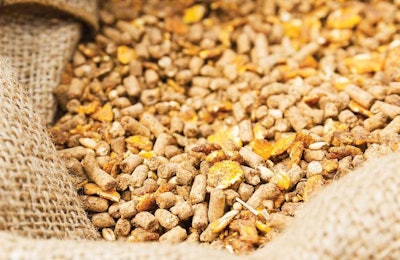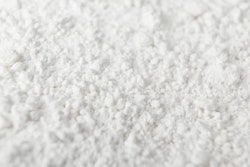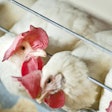When feed enzymes were first used more than a decade ago, their acceptance was limited to phytase applications for reduced phosphorus excretion. Although feed enzymes have been utilized for many years, we have only scratched the surface as research on feed enzyme technology.
The greater understanding of feed enzyme use comes at an ideal time as the demand for high-quality protein across North America and globally continues to rise. With advancements in management and technology, animals are in production for a relatively short time. Producers need to maximize that time efficiently in order to meet increased protein requirements, including getting the most out of the feed.
Producers need to get smarter about optimizing animal production in a sustainable manner — and enzymes offer an opportunity to do that.
Combating indigestible ingredients
Poultry and swine diets traditionally contain highly digestible corn and soybean meal as base ingredients. A corn-soybean meal diet is about 85 percent digestible, leaving approximately 15 percent of the diet unavailable to the animal. The indigestible portion is increased in young animals that have minimal endogenous enzymes production within their digestive tracts.
Not only are these costly ingredients not being utilized, they are also causing detrimental effects in the gut. Undigested nutrients cause gut irritation and possibly diarrhea creating suboptimal conditions affecting nutrient absorption. This is another situation where enzymes can play a part.
In addition, North American nutritionists are seeing more alternative ingredients due to commodity price fluctuations. This creates a challenge as these ingredients have low digestibility and contain an increased amount of anti-nutritional factors.

Each of three categories of feed enzymes discussed in this article – phytases, carbohydrases, and protease – has a specific role and function in the animal that results in numerous benefits for producers. | Dreamstime
Basic enzyme function and benefits
Although all enzymes function similarly when supplemented in animal feeds by improving the efficiency of raw material digestion, nutritionists can use them to take different approaches. Each enzyme offers different characteristics that affect their dietary inclusion rate: their need for protective coatings, where they work within the animal’s gut, and their overall efficacy.
One of the most interesting and important factors of enzyme function is that each type has a very specific role within the animal. Each enzyme type acts on a substrate to start its chemical reaction within the body. However, only a certain enzyme can fit into a certain substrate – similar to a lock and key.
Benefits of using enzymes can be realized several ways:
- Reduction in diet costs when the ingredient price matrix allows.
- Growth or feed efficiency can be improved as a result of nutrient release, resulting in a decreased cost per pound of meat.
- Enzymes can also play a role in enteric health management. High-fiber diets alter the viscosity of the gut, and excess fermentation can result in mortality. Pathogenic bacteria can also thrive with an excess of dietary nitrogen.
While phytases and carbohydrases have been well established, proteases are a recent addition to the feed enzyme portfolio. It is important to keep in mind that each specific enzyme within each class is unique and needs to be treated as such. Not all enzymes are alike in their structure and activity.
Enzymes modes of action
Here’s an review of how nutritionists can use three enzymes to benefit the animal and the producer.
1) Phytase
The substrate for phytase is phytic acid, which is how phosphorus is stored in plant tissues. Phytic acid is problematic to the animal because it binds minerals and amino acids which become unavailable to the animal. This results in beneficial nutrients being excreted into the environment, resulting in a loss in performance.
Phytase enzymes have been added to monogastric diets for more than a decade. As previously stated, the primary goal and mode of action of phytase is to reduce phosphorus excretion, and its use continues to increase due to diet cost savings. The initial savings are associated with reduced dietary phosphorus cost, but nutritionists also have the flexibility to reduce the amount of soybean meal due to improved amino acid digestibility.
2) Carbohydrase
The carbohydrase class of enzymes includes xylanases, glucanases, and amylases. They act in the stomach to break down and degrade carbohydrates such as fiber, starch and non-starch polysaccharides into simple sugars that provide energy for use by the animal.
Grain sources such as corn, barley and wheat have hard coatings on the outside. Much of the coating is physically broken up during feed mill processing, but not completely. The fibrous portion of grain cell walls is indigestible, and 10 to 20 percent is getting through. Carbohydrases will attack and degrade these starchy grain molecules.
One of the most common carbohydrases is xylanase. Xylanase attacks the arabinoxylan structure of corn or wheat, allowing the animal to absorb its components as an energy source. This limits the requirement for supplemental fat or energy in the final diet.
3) Protease
Protease enzymes are the newest technology on the block, with animal or vegetable protein as their substrate. They break down anti-nutritional factors associated with various proteins. Proteases improve the digestion of proteins and increase amino acid availability, which helps release valuable nutrients. The result is improved animal growth and performance and minimal negative effects of undigested protein in the hindgut.
Raw ingredients with low amino acid digestibility respond greatest to an exogenous protease, which is why its greatest value is when alternative ingredients are used in the diet. Proteases help producers manage the nutritional risks associated with feedstuff quality and allow them to best utilize all available feed ingredients.
Proteases are not limited to diets with alternative ingredients. Animals consuming a traditional corn-soybean meal diet cannot utilize 100 percent of the protein fraction. Therefore, adding a protease enzyme to a corn-soybean meal diet will enhance amino acid digestibility and animal performance.
Future use
The benefits of enzymes are becoming better realized as more research is done. For the animal, enzymes optimize gut health, produce uniform growth and enhance overall health. For the producer, they decrease feed costs and improve profitability.
Each type of enzyme has its own specific function and therefore do not interfere with one another.
The bottom line is, the use of enzymes will continue to grow as we learn more about each technology.














